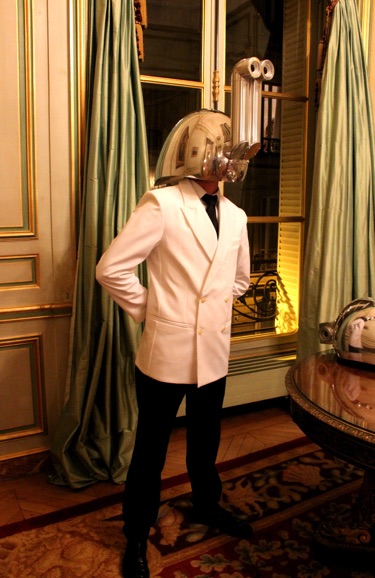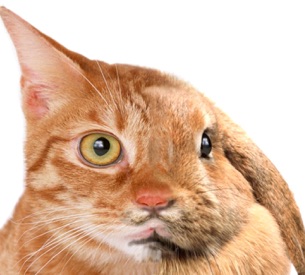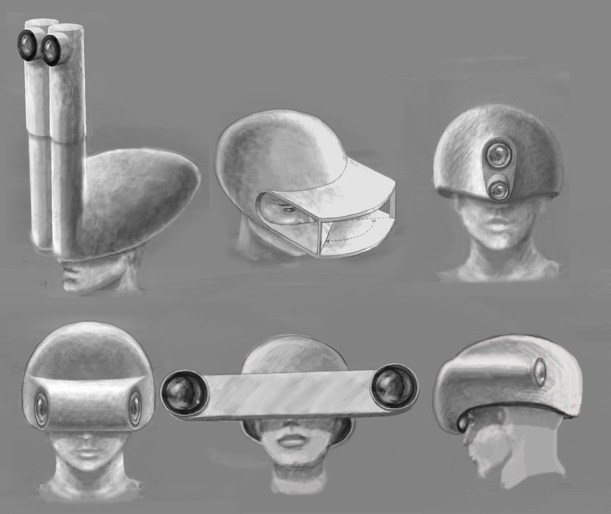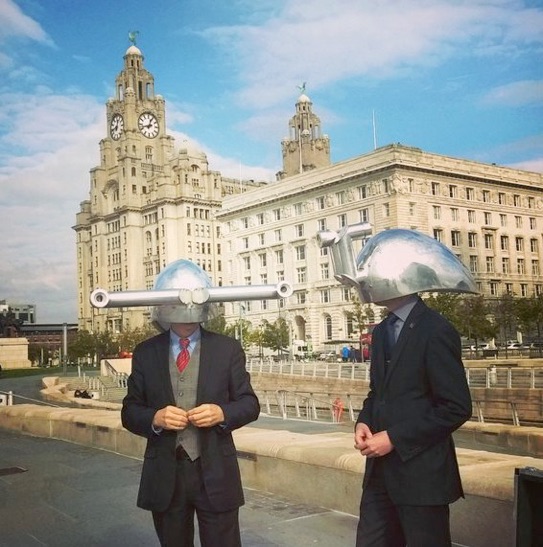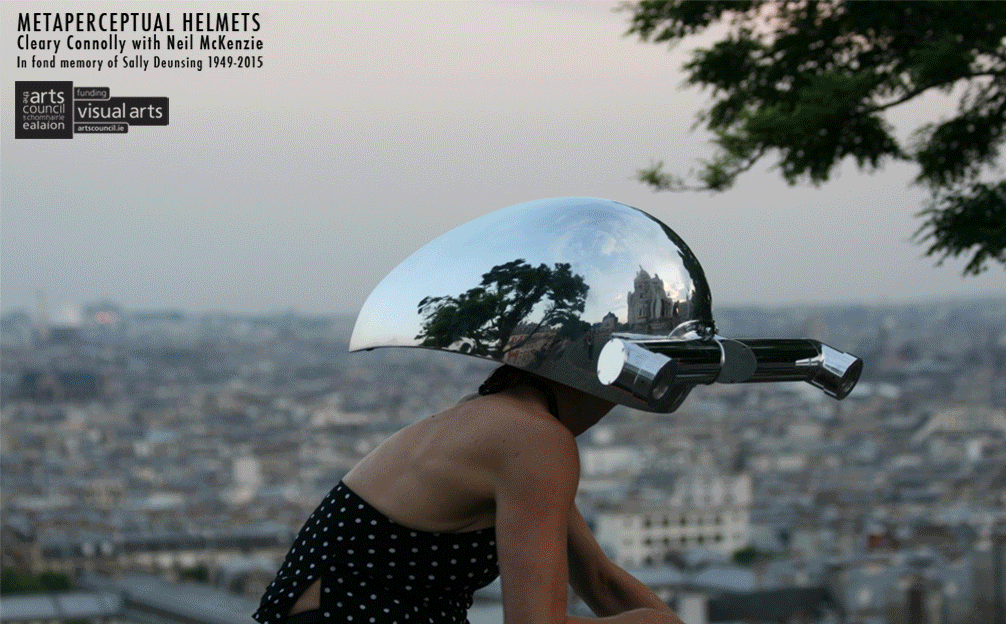The Meta-Perceptual Helmets are the ultimate chapter in our exploration of what we call the art of looking, a notion that the artwork is only brought to life by observer participation. With the helmets we have tried to make a perfect loop of looking and being looked at. Wheeler placed the observer at the centre of the universe, we are placing the spectator at the centre of the artwork.
The project takes as a starting point the pioneering experiments in perceptual adaptation carried out by psychologist George Malcolm Stratton in the early twentieth century. Stratton wore special glasses which inverted images up and down and left and right for over a week, and discovered that the human brain could adapt to these new conditions.
These five helmets/viewing devices start off by exploring physical conditions of viewing: if we have two eyes, they why is our vision so limited? Why do we have so little perception of depth? Why don’t our two eyes offer us two different, complementary views of the world around us? Why can’t they extend from our body so we can see over or around things? Why don’t they allow us to look behind and in front at the same time, or sideways in both directions? Why can’t our two eyes simultaneously focus on two different tasks?
Looking through Michael Land’s defining work Animal Eyes, we see that nature has indeed explored all of these possibilities: a Hammerhead Shark has hyper-stereo vision; a horse sees 350° around itself; a chameleon has separately rotatable eyes…
The series of Meta-Perceptual Helmets explore some of these zoological typologies: proposing to humans the hyper-stereo vision of the hammerhead shark; or the wide peripheral vision of the horse; or the backward/forward vision of the chameleon… but they also take us into the unnatural world of mythology and literature: the Cheshire Cat Helmet is so called because of the strange lingering effect of dominating visual information such as a smile or the eyes; the Cyclops allows one large central eye to take in the world around while a second tiny hidden eye focuses on a close up task (why has the creature never evolved that can focus on denitting without constantly having to glance around?).
Wearing the helmets, the visitor becomes a hybrid creature himself, part human, part machine, part animal, but also: part work of art. A work of art that challenges those who contemplate the helmet - from the inside or from the outside - to take a new perspective on the world.
Anne Cleary & Denis Connolly, September 2014






